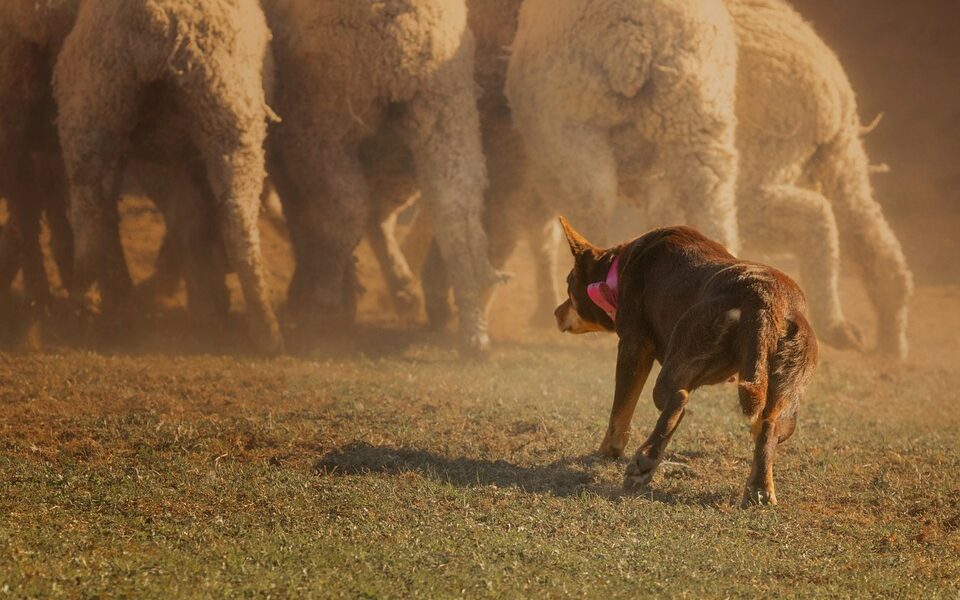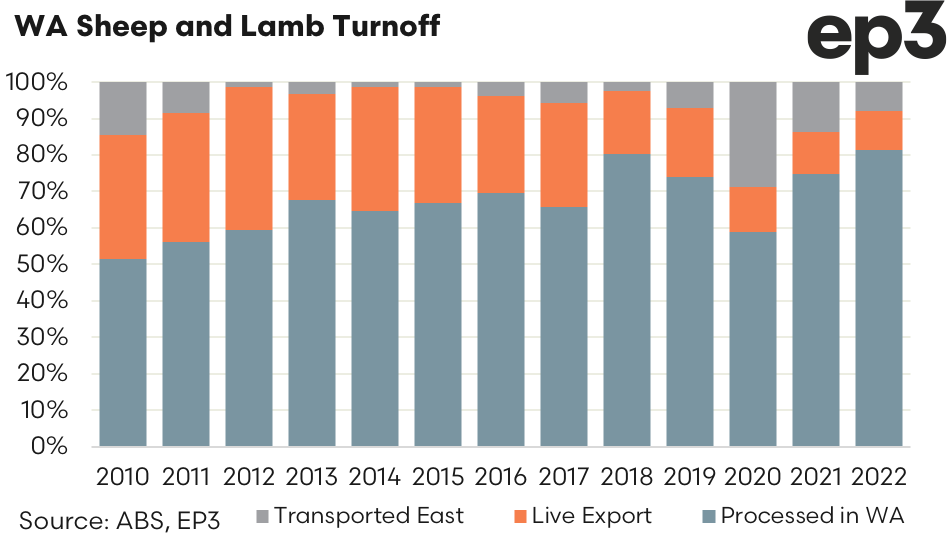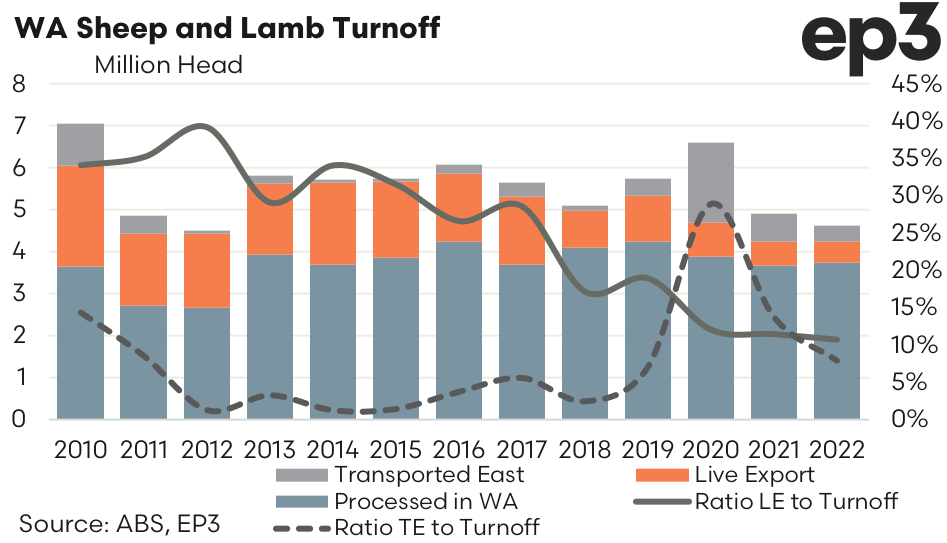Where to send them?

Market Morsel
As the 2022 season has drawn to a close we can assess the options used to turnoff sheep in WA. The western producer has three options for turnoff, slaughter locally, send east or send via live export.
Prior to the live export moratorium the proportion of turnoff into live export ranged between 30-40% of total turnoff. In 2018 and 2019 this proportion dropped to around 20%, then in the last few years it has drifted toward 10%.
In 2022 volumes sent from WA to live export was around 496,000 head, which was 11% of total turnoff that year. In terms of options to transport to the eastern states volumes were even lower, at 368,000 head or 8% of total turnoff.
Strong demand for sheep from the east during 2020 to restock after the 2019 drought, particularly from NSW producers, saw annual flows from west to east spike to 1.9 million head, or about 30% of WA turnoff that year.
But the option to send east isn’t something that can be relied upon every season, it needs a decent price discount from west to east in order to make the transport costs work out. Historically, prior to 2020, the ten year average of proportion of sheep sent west to east was about 5% of total WA turnoff per year. Over the last decade, including 2022, the average proportion of turnoff from west to east was about 8%.
In 2022 the proportion of WA sheep turnoff that was processed locally was 81%, the highest it has been on record. This underscores the importance of getting the processing sector running smoothly in WA, especially with regards to processing capacity and labour, so that the planned phase out of the live trade doesn’t jeopardise the WA sheep farmer.


